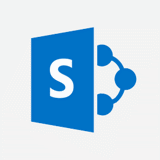Discover how to extend SharePoint beyond your organization. Learn strategies and best practices for maximizing SharePoint's potential with Facile Technolab.
Discover how to extend SharePoint beyond your organization. Learn strategies and best practices for maximizing SharePoint's potential with Facile Technolab.
 If SharePoint is used as your employee productivity and content management tool but your clients, vendors and partners are still receiving content via email, its probably good time to think about extending SharePoint to reduce content duplication, process automation and increased efficiency. By extending your SharePoint securely, you will be able to achieve less redundant content, easy collaboration and improved productivity.
If SharePoint is used as your employee productivity and content management tool but your clients, vendors and partners are still receiving content via email, its probably good time to think about extending SharePoint to reduce content duplication, process automation and increased efficiency. By extending your SharePoint securely, you will be able to achieve less redundant content, easy collaboration and improved productivity.
Once you understand that extending SharePoint is something that is going to be valuable to you, you can start browsing options about securely extending your SharePoint Farm. Based on your current infrastructure setup, you can choose from following:
SharePoint has support to integrate ADFS authentication using claims authentication and SAML. If you are already having ADFS Server configured and you are managing external users there through AD Groups, this will the best option to go with.
In this method, you will manage all your external users inside your Active Directory by creating specific organization units and AD Groups. Once you have ADFS Authentication configured correctly with SharePoint, you can manage access for your ADFS Users through their AD Groups directly into SharePoint. If your Active Directory Administrator can maintain a single group and that single group is Configured to access SharePoint, you can easily manage access at single point without needing ongoing support for maintaining SharePoint Access Management.
There are so many articles already available on internet to configure ADFS Authentication in SharePoint correctly.
SharePoint supports both Microsoft Sql Server and LDAP to store your users and roles. In order to easily manage your Form Based authentication users, roles, email templates, change password etc through a third party free wsp solution called FBA Pack but sadly its only available for Microsoft Sql Server Based fba implementation. There are some third party vendors that provides Form Based Authentication management tools for LDAP but that are not free.
When you are planning ADFS Authentication, please consider following important parameters:
Hope this article helps you find detailed information on various methods to extend SharePoint. Please feel free to tell us what you think about extending SharePoint through comments.